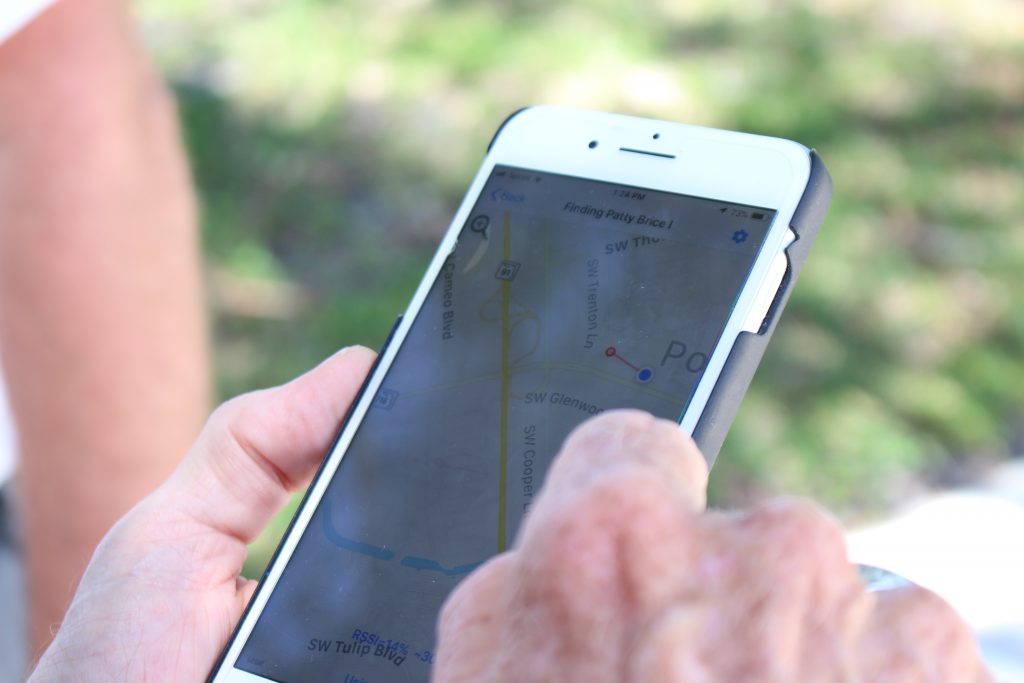 Failure.
Failure.
That is what started me on this journey 2 decades ago… some believe that admitting failure is an admission of defeat, but that is far from the truth here. It was failure that set-in motion my desire to find a solution in which failure would no longer be the typical outcome.
It was never an easy task to step into a family’s home and provide them with life-shattering news. There is no word to describe how it felt watching hope quickly fade from their faces into sorrow and pain. Well, maybe there is one: desperation.
With each passing incident, and trust me there were all too many, I was desperate to find the cause of these outcomes. What were we doing wrong? What did we miss? How can we possibly do this better?
That is where it began.
I set forth on a mission that no one had ever explored before: applying electronic tracking to the search and rescue of vulnerable populations. Fitting right in with the times, many thought I was crazy – hell, if we are being honest, sometimes I was right there in the boat with them – I had no clue if this would work, but I had to do something because anything would be better than those SWAG searches.
On April 9, 1999, I placed a transmitter on a man in Virginia Beach, Virginia – the very first Project Lifesaver client. At the time, I had never envisioned that this little inkling of an idea that I had would ever grow to this magnitude.
More than 20 years later, Project Lifesaver has been successful in saving more than 3,500 lives. However, it is no longer the only locating option on the market – a word a truly hate to use, because a time in which people’s lives are at stake is not a time to profit… by no means should a family be extorted in order to provide safety, a given right, to their loved one. With all these new additions, I have found that many individuals have growing doubts and confusion.
What is the right option for my family?
Why don’t you utilize the more advanced and recent technology?
What is the advantage of Radio Frequency over these other technologies?
In my opinion, there really are no comparisons the two; it would be the same as comparing apples to oranges. Which in all fairness, is true, as GPS was created for navigation, not location.
However, as a caregiver or maybe an agency looking to implement additional safety measures, you need to know all the facts. After all, it is not just our taste buds in jeopardy… it a precious human life. And unfortunately, there are many incorrect assumptions about the capability of the devices available – most of which stem from the lack of disclosure by the companies selling them.
So, what really are the differences between these technologies? Let’s take a look:
| Radio Frequency | GPS | |
| Operated by | Trained & Certified First Responders | All responsibility falls on the caregiver. |
| Battery Life | Up to 60 Days | Limited life depending on use. Typically needs to be charged once per day. |
| Cost | Typically, free to low cost depending on the source. | Typically, more expensive, and requires a monthly service fee (if A-GPS). |
| Interference | Very limited, but the signal can still be located. Any interference may slightly lessen the range of the device. | High-Interference, including weather, buildings, dense foliage, etc.
Note: GPS signals will not transmit through water. |
| Early Warning | This functionality is available with the perimeter system (if operated through PLI). | Available functionality but can be delayed based on the signal of the device. Floating signals can also trigger false alerts. |
| Active Monitoring | Not actively monitored. Tracking is activated during a missing person case. | Can be actively monitored by the caregiver but will significantly drain the battery life. |
| Water Resistance | Highly water resistant. The signal can still be detected in up to 12 feet of water. | Depending on the model. Many are not and would lose functionality if exposed to water. |
| Listen In | Not available. This feature tends to go against many privacy laws and does not significantly assist in identifying the location of a lost individual. | In some models. Typically requires an additional cost. |
| Range | With current practices, the range of RF equipment are as follows:
Ground: 1-3 Miles Air: Up to approximately 5 Miles |
Unlimited range, if the device is in a clear, unobstructed area with excellent cellular reception. Any other conditions will hinder the ability of the device, potentially causing failure. |
| Size/Device Type | Small, watch-sized wristbands that can be worn on the ankle or wrist. Cannot be removed unless cut off the individual. | Varies. In some cases, the device is as large as a cell phone and can be as small as a key chain. The smaller the device, the less battery life, but the larger the device, the less easy it is to conceal. Most can easily be removed. |
For more information about the differences between RF, GPS, and A-GPS technologies, please read the Project Lifesaver Technology Statement.
Remember, we are not providing this information to shine a brighter light on our practices; we simply want everyone to have all the facts to make an informed decision about the safety of their loved ones.
